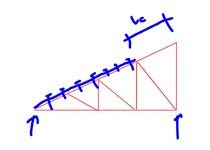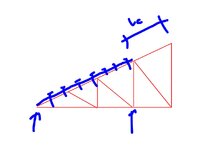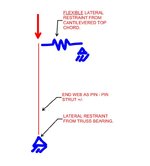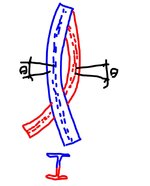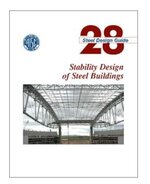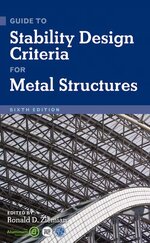Feisty indeed! Perhaps more than feisty, but let's move on.
My definition of meaningful stability is also mirrored in every textbook on structural stability that I've ever read. Every. Single. One. It's not "just me".
I have already posted a quote from Salmon's and Wang's "Introductory Structural Analysis" that defines the broader meaning of stability as a basic concept of equilibrium. Once again, your definition of "meaningful" stability is not a real. You continue to focus on "elastic" stability, a narrower subset of stability problems. Ignoring static stability will be at your own peril. I am sure none of the accomplished structural engineering authors you have mentioned would ever do so.
All of those references spend 99% of their time on problems that include flexibility because that's what matters for the overwhelming majority of real world structural stability problems.
What matters in addressing any engineering problem is to address fundamentals first and foremost. Ignoring fundamentals to get into the weeds with more "meaningful" problems will again be at your own peril.
Where references spend any time at all on problems with no aspect of flexibility, those are usually just kindergarten level problems intended to introduce basic concepts to hapless newbies.
Thank you for the thinly veiled insult. I hope you feel better after landing that one.
So, yes, I have attempted to limit the discussion to a particular subset of all possible stability problems. That subset being the useful ones. The ones that might actually provide meaningful insight on practical problems in structural engineering.
Again, I say to overlook or dismiss engineering fundamentals is never going to be practical or wise.
Got a copy of AISC Design Guide 28 on Structural Stability? Take a spin through there, count the number of examples that they deal with that don't involve flexibility and let us know what you find.
Don't have that, try the practitioner's stability bible, Stability Criteria for Metal structures. What percentage of the material there covers problems where flexibility plays no part?
Got neither of those? Count up the non-flexibility problems covered in this freebie by Timoshenko and compare that to the total:
Theory of Elastic Stability.
Wow! Talk about a nerd pissing contest. You are challenging my library of engineering reference textbooks, and putting yours on the table to show off. Well done, but you should know that AISC Design Guide 28 is available to AISC members for free, so I think I can manage at least that one. Thanks.
Why do you think that "Elastic" is included in the title of Theory[sic] Theory of Elastic Stability?
Seems like you should be asking yourself this question. Obviously, it is as I've been saying. It's to specify that the focus is on a subset of stability problems, namely elastic stability.
Look, I don't think this is an either or discussion. A "kindergarten" discussion for "hapless newbies" or an intellectual discussion for geniuses. I think this is a discussion of a real world, practical, structural engineering problem that should be approached like all engineering problems, starting at a fundamental level. It is not elementary or "kindergarten" to address and take care of fundamentals. It is good sense, practical, and usually necessary.
Take the concept of joist blocking at points of bearing. Why do we need it? You say for lateral torsional buckling restraint, and you seem to say that since we have a diaphragm attached to the top of the joists, we actually don't need joist blocking at all. Yet, the code says we do. Why? Those dumb code writers.
I say, from a practical standpoint, first and foremost we need joist blocking to ensure static equilibrium (stability) of the joist against rollover. Other considerations, like lateral torsional buckling, or shear transfer out of a diaphragm, or whatever, follow suit in due time under various loading conditions. To me, there should be a logical sequence of engineering analysis and design that progresses from the fundamentals, and coincidentally, such a sequence often mirrors the service conditions of the structure and the loading sequences it will be expected to experience, including during construction/erection.
I say, try building a 2x12 joist floor without blocking at bearing locations, and you will quickly discover the very real and most fundamental reason for restraint against end rotation or overturning long before you have the diaphragm attached or load the joists to lateral torsional buckling failure. Restraint against end rotation is necessary to ensure basic, fundamental, static equilibrium (stability) of the joists. It would not be wise to handwave away this or any other practical, fundamental, engineering principle because one considers it too simple to be considered worthy of the greatest of minds.



